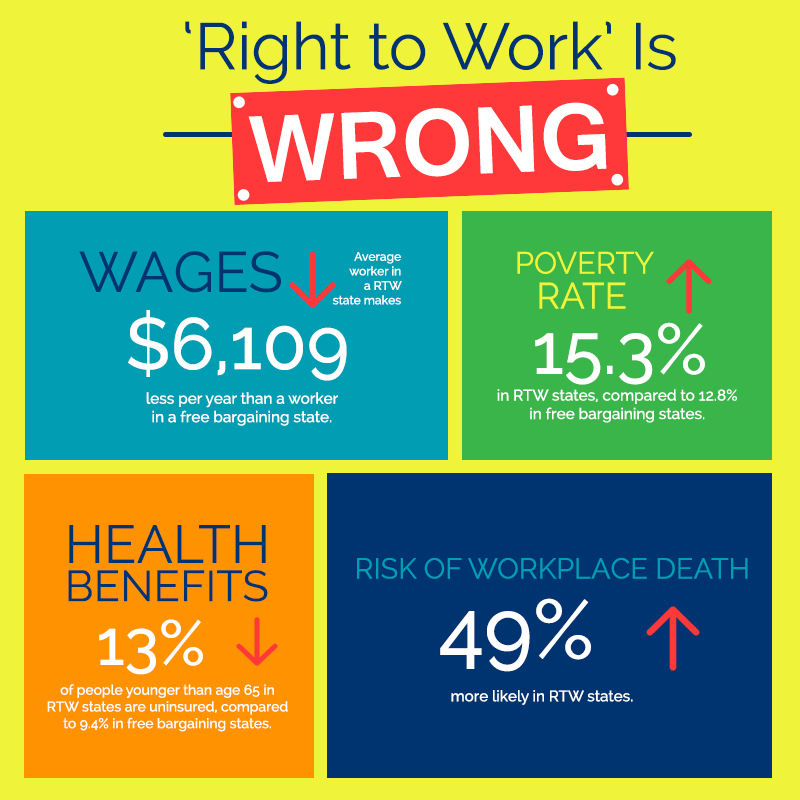Proponents of right-to-work laws defend them on several grounds:
The laws lower wage costs, and thus consumer prices.
The laws benefit workers in non-unionized workplaces, who will earn less in their absence.
The laws give particular workers opportunities to negotiate for better, or different, terms of employment.
States with “Right-to-Work” Laws Have Lower Wages and Incomes
On average, workers in states with right to work laws make $6,109 a year (12.1%) less annually than workers in other states ($44,401, compared with $50,511).1
Median household income in states with these laws is $8,174 (13.9%) less than in other states ($50,712 vs. $58,886).2
29.6 percent of jobs in right to work states were in low-wage occupations, compared with 22.8% of jobs in other states.3
States with “Right-to-Work” Laws Have Higher Workplace Fatality Rates
“Right-to-Work” makes workplaces more dangerous. According to data from the Bureau of Labor Statistics, the rate of workplace deaths is 54% higher in right-to-work states.4
1 Bureau of Labor Statistics, Quarterly Census of Employment and Wages (all industries, all establishments, average annual pay), 2014 data. Numbers are rounded ($50,510.58 and $44,401.17).
2 U.S. Census Bureau, Table H-8. Median Household Income by State: 1984 to 2014.
3 CFED, Asset and Opportunity Scorecard, Low Wage Jobs, 2013.
4 Bureau of Labor Statistics, National Census of Fatal Occupational Injuries in 2014.

https://aflcio.org/issues/right-work
water damage parkland
fire damage coral springs
No comments:
Post a Comment